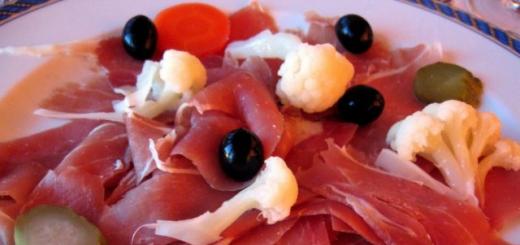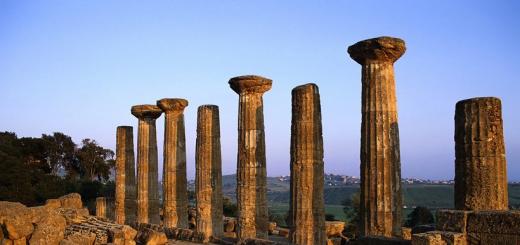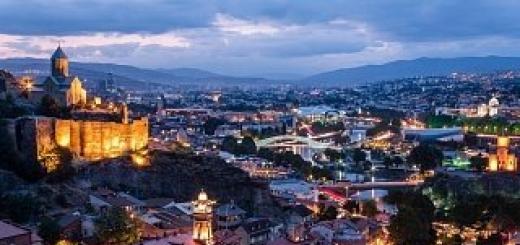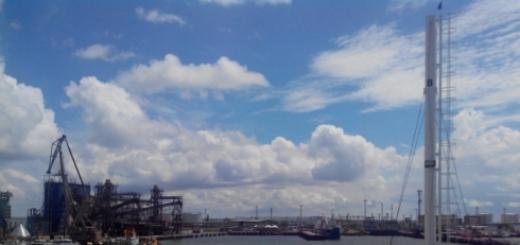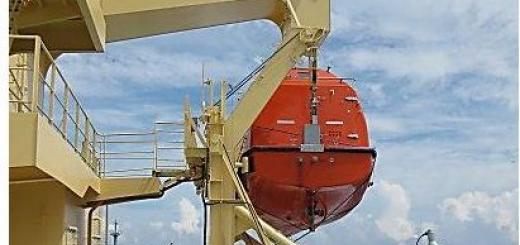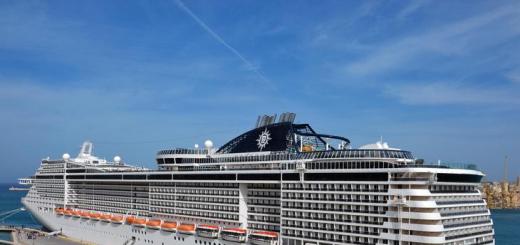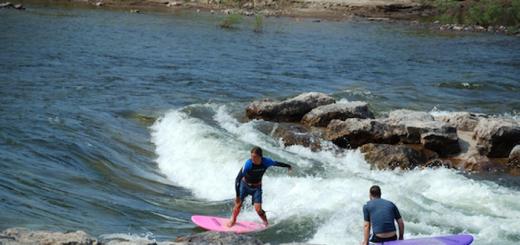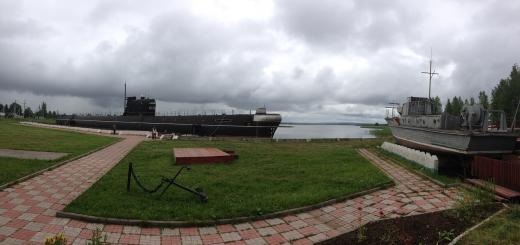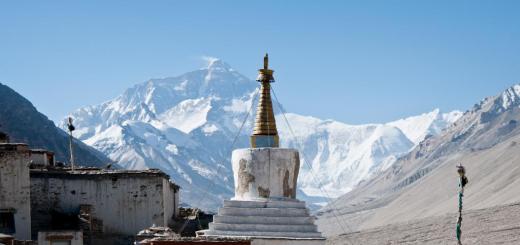Check-in daily
Visiting 18 cities in Portugal
Lisbon - Sintra (Regaleira Estate) - Pena Castle - Cape Roca - Cascais - Estoril - Obidos - Alcobaça - Batalia - Tomar - Porto - Braga - Bom Jesus - Guimarães - Coimbra - Fatima - Underground riches of Portugal: Piggy bank cave with coins - Mafra - José Franco village - Ericeira - Evora - Statue of Christ - Drive over the Vasco de Gamma Bridge and April 25 - Douro river cruise - Port wine tasting - Dinner with Fado
Accommodation: Lisbon 5 nights - Porto 2 nights (8 days / 7 nights).
1 day
SPb-LISBON. Arrival in Lisbon.
Meeting at the airport and transfer to the hotel. Free time.
For those who wish, for an additional fee: 15:00 - 18:00 - excursion Lisbon LUX. Walking tour 2 hours (35 euros per person) and cruise 1 hour 30 minutes (paid locally, 20 euros per person). The historical part of the magnificent Lisbon awaits you: Se Cathedral, St. George's Castle with an unforgettable view of Lisbon, Santa Justa, the main square of the capital of Portugal - Plaza do Commerce (Square of Commerce), Rossio Station. A cruise on the Tagus River will show Lisbon from a new angle, take wonderful photos for memory!
2 day
LISBON. Breakfast in the hotel.
08:00 - 17:00 - excursion Sintra LUX: visiting Quinta da Regaleira, Pena Palace (Palacio da Rena), Cape Roca, Cascais and Estoril resorts. Sightseeing tour of Sintra. The fabulous medieval town has retained its charm to this day and deserved the name "Pearl of Portugal". In Sintra with his servants. Sintra is romantic landscapes, exotic parks, beautiful palaces and mysterious castles, where the kings of Portugal loved to spend the hot summer months. Pena Palace is a former royal summer residence and one of the seven wonders of Portugal. This palace is a fairy tale - without analogues in the world. After an exciting adventure through mysterious castles, a trip along a serpentine mountain road to the westernmost point of the European continent at Cape Roca. There you can buy a true Certificate of visiting the End of the Earth. Further, the tour route runs through the famous resorts of Cascais and Estoril, favorite vacation spots of the aristocracy from all over the world. The resorts offer luxurious villas surrounded by eucalyptus groves, the best beaches in central Portugal, luxury hotels, fine restaurants, world-class golf courses, one of the most famous casinos in Europe and the famous Formula 1 track.
3 day
LISBON-PORTO. Breakfast in the hotel.
08:00 Departure from the hotel and transfer to Porto. Sightseeing tour in Porto, with lunch. You will see the "railroad palace" - the Sao Bento station, decorated with a panel of tiles, the highest tower of the city - the bell tower of the Baroque Clerigos Church, the Cathedral, from which along the medieval streets with granite houses of the XII century. go down to the Douro promenade and take a boat ride under the prominent Eiffel and Cardoso bridges, visit the church of St. Francis, which is unrivaled in gilded carving in Europe, visit the Grahams wine cellars, where you will learn the production process and the history of Portuguese port wine, and taste the famous wines (tasting is paid on the spot, 6 euros). Douro river cruise also payable locally, 15 euros. Lunch at a national restaurant with drinks. Check-in at a hotel in Porto. Free time.
Day 4
PORTO. Breakfast in the hotel.
08:00-17:00 excursion Braga - Guimaraes - Bom Jesus, with lunch.
Guimarães- the cradle of the Portuguese kingdom. The Castelo de Guimaraes fortress of the 11th century awaits you. Its observation towers offer a breathtaking panoramic view of the surroundings and the Palace of the Dukes of Bragana. Lunch at a national restaurant with drinks. Braga founded more than 2.5 thousand years ago, the city was the capital of the Roman province of Galicia and an outpost of the Christian faith. Today it has retained its great importance for Christians around the world. There are many architectural monuments in Braga, including the Cathedral, ancient churches, the Pelican Fountain on the Municipal Square, Arcade. You can walk around the unique complex Bom Jesus, this place was the largest center of Catholic pilgrimage. On an impressive staircase (254 steps!) Pilgrims climbed to the church on top of the mountain. Return to the hotel in Porto. Free time.
Day 5
PORTO-LISBON. Breakfast in the hotel. Departure from the hotel with things.
08:00-17:00 Excursion Quimbra - Fatima - Grutas da Muede Caves, with lunch.
Coimbra- an old town, and the University of Coimbra - the oldest in Europe, founded in 1290! You will see the magnificent Romanesque Cathedral of Sé Velles and the Augustinian monastery of Santa Cruz, which has been preserved since the 12th century. King Alphonse Enriquesha I and his son Sancho I lie there. If you get to Coimbra during the holiday, you will definitely meet a lot of people in original raincoats with distinctive ribbons of faculties. Grutas da Moeda translates as " Piggy bank with coins”, this is a real underground treasure of Portugal - a complex of karst caves of incredible beauty, created by nature itself, with outlandish figures, limestone stalactites and stalagmites, lakes and waterfalls. The entrance ticket to the caves is paid on the spot, 6 euros. Fatima For almost a century it has been one of the main religious centers in Europe. Every year, pilgrims from many countries come to Fatima to see with their own eyes the place where miracles happened.
Arrival in Lisbon and accommodation at the hotel.
Day 6
LISBON. Breakfast in the hotel.
08:00-18:00 tour "Provincial Portugal" (Mafra - José Franco Village - Ericeira), with lunch. Sightseeing tour of Lisbon.
There are many settlements in Portugal that can be called open-air museums. colorful fishing town Ericeira, nestled comfortably on a beautiful ocean shore, has retained its originality to this day. José Franco- a typical Portuguese village of the early 20th century. It was founded by the potter José Franco around an ancient castle, a church and a mill. The town consists of small, cozy houses. In the village you can enjoy a traditional lunch consisting of delicious bread and dried sausages, which are made according to an old recipe. It is customary to drink simple peasant food with local wine. The last point of the excursion is the town Mafra, where a giant palace and monastery complex is located, one of the most grandiose in Europe. He's great! The baroque palace was built by King Joan V, who at that time was the richest king in Europe, and wanted to outshine the greatness of Escorial himself with his creation.
Sightseeing tour of Lisbon will pass from Independence Avenue through Rossio Square with the famous statue of King Pedro IV, magnificent bronze fountains and the most beautiful building of the National Theater of Dona Maria II, to Commerce Square and further, to the Jeronimos Monastery in Belém, which is considered the most impressive building in Portugal in the artsy Manueline architectural style. At the end of the tour, you will get acquainted with the exquisite monument of the 16th century - the Belen Tower, which resembles a fairy-tale castle, and the monument to the Discoverers, which was made of noble granite in those days when the dictator António de Salazar was in power..
Day 7
LISBON. Breakfast in the hotel.
08:00-15:00 Evora tour - 25 April Bridge - Christ Statue - Vasco de Gamma Bridge.
You will pass the bridge 25th of April(previously it was named after António Salazar) - one of the longest suspension bridges in the world, like the famous bridge in San Francisco, to Cristo Rey- The statue of Christ, 113 meters high, which is a copy of the monument in Rio de Janeiro. Then the path leads to the ancient city Evora, whose turbulent history began in 80 BC. The city was actively built up and developed by the Romans, Moors and Portuguese kings of the Middle Ages, and now the entire architectural ensemble of the old city is included in the UNESCO World Heritage List. Particularly noteworthy is the unprecedented beauty of the Cathedral of Evora in the Romanesque-Gothic style, built between 1186 and 1204, the Church of Santo António, the temple of Diana of the 2nd century, the Church of St. Francisco with a striking chapel made of real human bones, which was supposed to remind of the frailty of earthly existence. The tour ends with a drive over the Vasco de Gamma cable-stayed Bridge. It is the longest bridge in all of Europe, with a total length of 17.2 km.
20:00-23:00 Dinner with Fado. The urban romance of Fado is the musical symbol of Lisbon. Dinner is waiting for you in a restaurant with national color and Fado performance.
Day 8
LISBON. Breakfast in the hotel.
08:00-17:00 excursion Obidos - Batalia - Alcobaça - Tomar, with lunch.
You will visit a charming town Obidos, the "city of brides", in which the Portuguese monarchs spent time after their marriage. Then - a medieval abbey in Alcobas in the early Gothic style, where representatives of the Burgundy dynasty are buried. Further - Batalha and the Monastery of Santa Maria da Victoria, a masterpiece of Portuguese Gothic architecture, with a visit to the Shrine of the Kings of Avis, a unique blend of Manueline and English Gothic styles. In the end - the city of the Templars Tomar and a visit to the most grandiose building in Portugal - the Monastery of the Order of Christ. Convento de Cristo was founded in 1160 and for centuries was the main stronghold of the Portuguese Templars and their heirs, the Order of Christ. According to legend, this is where the mysterious Grail is hidden.
Return to Lisbon.
Transfer to the airport, flight to St. Petersburg.
After the sightseeing tour, we offer you to relax in the Algarve, on the Lisbon Riviera, about. Madeira, Azores.
The cost of additional excursions (paid locally):
Cruise on the river Douro - 12.5 euros per person.
Cave "Piggy bank with coins" - 6 euros per person.
Cost of additional options:
Economy - "Comfort" supplement per person to the price of the tour hotel 3 * - 4 *
150 euros - accommodation in a double room or on extra. beds
250 euros - accommodation in a single room
- Hotel in the central area of Lisbon 5 nights - Marqués Pombal area - central Avenida Liberdade
- Seats on the bus
- Headphones for all excursions
Premium - "Comfort" supplement per person to the price of the tour hotel 4 *
190 euros - accommodation in a double room or extra. beds
290 euros - accommodation in a single room
- Private transfer a/p-hotel-a/p
- Hotel 4 * in the central area of Lisbon 5 nights - Marqués Pombal area - Central Avenida Liberdade
- Seats on the bus
- Headphones for all excursions
- Gift on arrival Bottle of famous Portuguese Port wine 1 per room
Note: the cost is valid subject to the presence of a minimum fare for air tickets. Please check availability with our managers.
The tour program is valid upon arrival on Friday. Please clarify the changes in the order of excursions in the program upon arrival on another day of the week.
Portugal. The desire to write about my trip to this country arose immediately after my return. I wanted to somehow thank the people with whose help this tour was compiled, whose advice and recommendations helped me on my journey. I decided not to include "lyrical" digressions in my report. I am sure that travelers who are reading my message at this moment are interested in PRACTICAL advice. So, on the way...
Planning a trip to Portugal
While preparing my trip, I came across an interesting message: 07.07.07 in Portugal, in Lisbon, the "7 Wonders of the World" were named according to a survey of 90 million people around the world. There were also named "7 Wonders of Portugal" out of 223 objects. Decided, I must see the BEST. The fact that the majority of the inhabitants of the country considered "the most, the most." This is:
Monastery of Gironimos (Lisbon)
Belem Tower. (Lisbon)
Monastery of Batalha. (Bataglia)
Monastery in Alcobas.
The walled city of Obidos.
Lock. (city of Guimaraes)
Pena Palace (Sintra).
Looking ahead, I want to say that I saw EVERYTHING, which I never regretted. Most of the named "wonders" are located nearby, in the center of the country, with the exception of the castle in Guimarães, which is located in the north about 60 km from Porto. But this city is called the "cradle of the nation", visiting it left pleasant memories. When planning any trip, I always carefully study the routes offered by travel companies. Especially those trips that are offered for an additional fee. As a rule, this is the “highlight” of this tour, something that you should not refuse.
Transport
Most tourists used the services of German airlines. We were satisfied with the flights of the Dutch airline KLM. Convenient arrival and departure. Excellent service, low prices, self-check-in, when you choose your own seat in the cabin.
We rented a car in Portugal. In Lisbon they moved independently. I recommend buying a metro card in advance for all types of transport, including the train to Sintra. From the airport to the center we were not put on the bus 44 with a suitcase. We got on AIROBUS, a stop nearby, the price is 3.5 euros per person. (11.2010), upon purchase, the ticket is composted and, according to some information, is valid for travel by any type of transport of this company during the day. Tried to clarify this information, but opinions are divided. In large cities - Porto, Quimbra there are problems with parking, we tried to take hotels with free parking. A LOT of toll roads. I decided to count. For 5 days, having traveled 1500 km, we paid 70 euros. Probably, the locals know the detours, and we only had time to open the wallet. Although the roads are in good condition, the speed is up to 120, the nature of driving did not bother local motorists. The car was ordered through a Russian company, there are no comments on their work, but be careful when placing an order. (the level of gasoline is indicated there) and other data. (portugalia-travel.com)
Accommodation
On this trip, it turned out that we booked hotels of different levels. Booked through Booking.com. I will briefly discuss each:
Lisbon. Hotel "Residencial Florescente". Great location, VERY central. Metro, train station, trams to any part of the city, pedestrian zone. Cosy, clean, modest breakfast. Free Internet. Cons - small rooms and a transparent door to the bathroom. Tourists we met at the restaurant at breakfast noted poor soundproofing. We walked so much that we slept without hind legs and no one and nothing interfered with us. The same American tourists booked the hotel directly, they got it cheaper. But, using the example of their experience, I do not advise buying Lisboacard, there are few museums in the Portuguese capital, and the card does not pay off if you walk and look, and not wander from one end of the city to the other to “check in”. (It's my personal opinion).
Fatima. We did not book a hotel in advance, but went there because there are VERY many hotels there. We went to several, found out the prices, and chose the Alleluia Hotel, practically across the street from the pilgrimage center, with free parking. Rooms are good, breakfast is not worth ordering. We were struck by the atmosphere of this city, the scope, the energy of this place. We are not religious people, but we were present at the service in the main church of the city. Very beautiful and touching. I advise you to visit there (although this city does not fit into my program, it is well located, next to Alcobaça and Batalha).
Coimbra. We knew that this was one of the major cities in Portugal, but after the small, puppet cities we visited, it seemed huge to us. We booked a guest house, with a shared toilet and bathroom. I wanted to live in a residential area, in an ordinary house, and feel like "a guest". This is a 3-story old house, about 100 years old, with no elevator, creaky steps and high ceilings. It is probably very nice there in the summer, as there is a small patio where you can have breakfast and relax. In winter, the room seemed to me uncomfortable and “worn out”, although in every detail of the interior it was felt that the owners strive to ensure that EVERYTHING is liked and remembered. The owner of this establishment, a girl of 20-25 years old, was too active, even importunate (in the middle of the night she offered to buy dolls from her, which she sewed with her own hands), but diligent and caring. The breakfast she served was delicious and plentiful. If you want an unforgettable experience, here is the address casapombal.com. This guesthouse is well located, in the old part of the city, on a hill, not far from the University, but we had to look for the promised free parking for a VERY long time, since all the places near the educational buildings were occupied.
Porto. The brightest and unforgettable impressions from the hotel "Castelo Santa Catarina" (RuaSantaCatarina 1347). Maybe in contrast to the previous night in a house with a shared toilet and bathroom on the floor. I saw photos of this hotel, I knew WHAT I was ordering. But the reality surpassed all expectations. A beautiful, historical architectural structure with a well-groomed garden (I can imagine how nice it is there in the summer) and a small park. We booked the last room with access to the garden, with two(!) isolated bedrooms at the regular price. Breakfast was declared continental, but the choice of dishes was quite good and varied. I took a camera with me for breakfast, I wanted to take a lot of pictures of the details of the interior, from the unusual sink to the rich interior decoration near the dining room (restaurant). I recommend - good location (next to one of the big pedestrian, shopping streets), free parking, unusual interior and adequate price.
Guimaraes. In the guidebook "Portugal" ("Polyglot") I read that this is "one of the best hotels" in Portugal. Pouzada "Santa Marinhada Costa" is located in a 12th century monastery a few kilometers from the city on a mountain. Beautiful view. The hotel is beautiful, with a large park, with a swimming pool. An interesting interior: cells equipped with chic 5-star rooms, a large hall with a heated fireplace (it was in winter), large corridors and halls. Everything is beautiful, pretentious, but ... we were not impressed. Breakfast for 20 euros per person. Decided not to order, it seemed too expensive.
Evora. Last night in Portugal. Hotel "Dom Fernando". Many have praised this hotel. Indeed, it turned out to be the most filled. Good price, great location, big pool, decent breakfast. If you include this city in your itinerary, and it is located 125 km southeast of Lisbon, the option of rest and accommodation is not bad.
Much can be written about Portuguese cuisine. I want to give you some advice: the best time to dine is between 12:00 and 15:00 in establishments that have Menudeldia. For 7 - 7.5 euros (11.2010) soup, main course of your choice (fish, meat), dessert, coffee + drink of your choice (wine, beer, juice, etc.) are offered. We ordered "complex lunches" in many places, as a rule, local residents dine there. Delicious, cheap, fast service. The second tip - be sure to try the suckling pigs (leitaudabarada) in the Mealhada area (they come there from all over the country, and they are considered to be the most delicious in the world), there are even sandwiches. In the north, marinated kids (cabrito). In Lisbon, the famous pastries at the popular pastry shop Pasteis de Belen (I didn't like it), but worth a try. In Porto - the famous tripesh ("Tripesh a fashion de Porto") in some restaurant for the locals (we accidentally went on St. Catherine Street). A huge hearty portion that should be eaten with crumbly rice. A lot has been written about cod and sardines, as a rule, these dishes are included in any daily menu. Delicious black pudding in Batalha (my husband bought it in other cities, but it was not SUCH tasty anywhere).

O shopping I can't write anything. It seemed to me that the largest selection of shoes in Porto (for every taste, a huge price range). Prices for fruits and especially vegetables seemed quite high, and almost did not differ from the prices that we saw at the Saturday market in Coimbra. I advise you to pay attention to the bottles with liquor of beautiful, original forms in the city of Obidos. There are also chocolate cups that are well packaged for shipping.
In conclusion, I want to note that my recommendations turned out to be dry, a little faceless, but I hope that someone will be helped when planning a trip to Portugal (for this I wrote them). I wish you a pleasant journey, bright, unforgettable impressions!
Svetlana. I will answer questions related to traveling in Portugal, Israel.
Scientists and historians have compiled a classic list of the seven ancient wonders of the world. Different countries make their ratings of amazing places. So Portugal has such a list of seven wonderful places. Here is a plan for at least a week.
1. Monastery of the Hieronymites, Jeronimos
The Monastery of Mosteiro dos Jerónimos is located in Lisbon, on the outskirts of Belém. This monastery is considered the greatest monument of Portugal. The openwork architectural complex is called "a hymn to the Manueline style."
The first stone of Jeronimos was laid in 1501, under the leadership of Diogo de Boitac. The architectural fashion changed, the project was transferred to new architects. The construction was completed in the 17th century, and in 1755 the monastery successfully survived the grandiose Portuguese earthquake. Reconstruction took place in the 19th century.
The exterior and decoration of the monastery church is dominated by the Manueline and Plateresque styles, while features of Mannerism have been preserved. The great Vasco de Gama is buried in Jeronimos.
2. Belen Tower
The graceful Belem Tower (Torre de Belem) stands over the Tagus River, opposite Jeronimos, and forms a single ensemble with the lacy facades of the monastery. The 35-meter fortress of Torri di Belen was built in 1515–21. It served as a defensive fort in the harbor of Lisbon and as a guide for sailors who left their native shores. The Belen Tower has become a symbol of Lisbon and an example of the Manueline style worthy of the UNESCO list.
In the 19th century, the romantic fort was restored by creating an artificial lake around it. An observation platform was equipped at the top, and a museum was opened inside. Today, Torri di Belen is accessible to tourists.
3. Monastery of Batalha
The abode of Santa Maria da Vitoria was called Mosteiro da Batalha for a reason. It was built in honor of the famous "battle" - the battle of Aljubarrota (1385). The victory over the Castilians meant a lot to João I and the entire Portuguese kingdom. The king made a vow to build a grandiose monastery and kept his promise.
The Monastery of Batalha is a combination of late Gothic and Manueline style. Construction, begun in 1386, was long: fifteen architects took on the project, replacing each other. The monastery survived a natural disaster, military invasion and oblivion. Restoration began in 1840. It continued until the beginning of the last century, but was not fully completed: the pantheon in the form of a rotunda, called Capelas Imperfeitas (Unfinished Chapels), was left without a dome.
4. Monastery in Alcobas
The Cistercian abbey, founded by Afonso Henriques in 1153, was the first Gothic monastic complex in Portugal. The monastery of St. Mary (Mosteiro de Santa Maria de Alcobaça) expanded over several centuries, acquiring the features of different styles of architecture. The monastery's cathedral was built in the Gothic style, but the main façade was reconstructed in the 18th century and acquired baroque features. The cloister is made in the Manueline style.
In the basilica there are two tombstones of the XIV century: the sarcophagi of Pedro I and the deceased unrecognized queen - Ines de Castro. The carved white marble tombs installed in the transept of the monastery church are considered an outstanding work of Portuguese Gothic and a monument to the great love of the king.
5. The castle town of Obidos
Óbidos Castle - "The City of Queens" (photo: Francisco Aragão)
The jagged stone walls on the green hill look like an illustration from a romantic fairy tale. Behind them is Obidos - a medieval walled city, a former royal residence, a national monument.
The first walls began to be erected in the XII century. Each ruler built new fortifications until the end of the 14th century. The fortifications and the palace suffered from the elements in 1775, were destroyed by Napoleonic troops during the invasion of 1808.
The urban ensemble of Obidos was restored in the 20th century. The fortress of Castelo de Óbidos has become a tourist center, a kind of museum. Behind the massive walls are snow-white houses, the Church of Santa Maria, ancient squares and museums. A hotel has been opened in the restored castle.
6. Royal Castle of Guimarães
Guimarães Castle - birthplace of the first king of Portugal (photo: Hector Terrer)
In Castelo de Guimarães, founded in 959, Afonso I was born in July 1109. Initially, there was a single donjon tower with a rectangular wall. For several centuries, the castle was expanded and became a powerful defensive complex. In the 15th century, Guimarães was abandoned for a long time: it was no longer suitable for defense, and then the cultural heritage was not taken care of.
In 1881, the castle received the status of a monument, later it was overhauled, supplemented with stairs and a suspension bridge, and is open to tourists.
On a hill above the fabulous city of Sintra stands the Pena Palace (Palácio Nacional da Pena). Bright walls play with colors against the background of velvet greenery, domes reflect the sun's rays. The exotic architecture of the castle causes surprise and delight.
On the scale of history, Pena can be called a "remake". In 1840, a grandiose castle with a romantic park appeared on the site of an abandoned ancient monastery. By order of Ferdinand II, it was created by the German architect Wilhelm Eschwege. He combined the Moorish and medieval knightly style, added Manueline features. Elements of the old monastery were also preserved. Today Pena Palace receives tourists, the interior is also open to the public.
7 wonders of Portugal on the map
How to organize your trip to Portugal?
Before you start talking about must see, a few organizational questions. Using my Lowcost.pro service, we look at what dates are the cheapest flights, for example, there are tickets to Lisbon for 10 thousand rubles.
Portugal is a country of the sun, wonderful holidays, fabulous travels, it is diverse both culturally and historically, as well as in choosing a beach holiday. The name "Portugal" comes from the Latin name of the settlement Portus Cale, literally "Port of Cale", located at the mouth of the Duero River currently part of the Greater Porto. Probably, many have heard about the "Seven Wonders of the World", but read about the "Seven Wonders of Portugal". The national project "Seven Wonders of Portugal" was organized by the Ministry of Culture of Portugal and was inspired by the international project "New Seven Wonders of the World". Both of these competitions were held in 2007 and their results were announced on the same day - July 7, 2007.
First miracle- Guimarães Castle, located in the city of the same name (Guimarães), was built in its current form in the 14th century. The first castle on this site was erected in the middle of the 10th century, during the early Reconquista.
Second miracle– Obidos Castle in its present form was built in the 15th century. Up to this point there were Roman baths, later a Visigoth fortress, and still later an important fortress of the Emirate of Cordoba. The castle is located in the city of Obidos of the same name, not far from Lisbon. Until the middle of the 18th century, the castle served as the country residence of the Portuguese kings.

Third miracle- The monastery of Santa Maria de Vitoria in the city of Batalha, formerly owned by the Dominican order and built in the Gothic style, was founded by order of King João I in 1385. Its active construction continued throughout the 15th century. Several Portuguese kings and the famous Prince (Infant) Henry the Navigator are buried within the walls of the monastery. The architectural complex of the monastery is included in the UNESCO World Heritage List.

Fourth miracle- Monastery of the Cistercian order of Santa Maria de Alcobaça, located in the city of Alcobaça. The monastery was built in 1153 by the first king of Portugal, who went down in history as Afonso I of Portugal. The building was originally built in the Gothic style, but in the 18th century it was rebuilt in the Baroque style. The monastery is included in the UNESCO World Heritage List.

Fifth miracle- Monastery of the Order of the Hieronymites Jeronimos, located in Lisbon. The monastery was founded in 1450 by the famous Portuguese prince (Infant) Henry the Navigator.

sixth miracle- The quaint Pena Palace, towering over the city of Sintra, was built by King Fernando II of Portugal. The architectural style in which the palace was built is defined as romantic and pseudo-medieval.

seventh wonder- Belen Tower, which was built in Lisbon, on an island located at the confluence of the Tagus River into the Atlantic Ocean. Construction continued from 1515 to 1521. The architectural style of the tower is Manueline, i.e. "Portuguese Renaissance" Initially, the tower played the role of a fortress with a powder warehouse, later it served as a prison, and even later - as a customs house. The Belen Tower is included in the UNESCO World Heritage List.

tour, tourism, travel art, buy a tour, find a tour
The magnificent Portuguese seven included recognized architectural monuments of the country: Guimarães Castle, the ancient fortress city of Obidos, Batalha Monastery, Alcobaça Abbey, Belen Tower, Jeronimos Monastery and the Pena Royal Palace.
Guimarães Castle
Guimarães - the oldest of the capitals of Portugal - is located 312 km from Lisbon. Guimarães is called the cradle of the Portuguese nation: it was here, in one of the towers of the castle, that Prince Afonso Enriques was born, who in 1128 defeated the troops of his mother Teresa of Leon, thereby freeing the Portuguese county from the feudal influence of the kingdom of Leon.
In 1139, Afonso won a grand victory over the Moors at the Battle of Ourik, after which he proclaimed himself king. From that moment, Portugal ceased to be a feudal inheritance and received the status of an independent kingdom. On one of the walls of the castle, you can see an inscription made of white plaster, made in pseudo-Gothic type: "Portugal was born here." The image of Guimarães is immortalized on the coat of arms of the country.
Museum City Obidos

Over 800 years of its history, Obidos has retained the appearance of a walled city. It is surrounded by impregnable bastions and battlements, in the niches of which there are arched passages decorated with medieval bas-reliefs. Obidos was a favorite residence of monarchs, a venue for celebrations and weddings. In the Middle Ages, the sea bay approached the gates of Obidos, but it became shallow, and cherry orchards bloomed on the site of the harbor. It was these gardens, as well as confectionery factories, that gave Obidos the glory of the liquor and chocolate capital of Portugal. Ripe cherries are used to produce a thick liqueur rich in color and aroma - ginzha liquor. And in November, during the days of the International Chocolate Festival, the old streets of Obidos turn into huge showcases filled with cakes, sweets and other sweets. In July, a medieval festival unfolds near the castle walls with knights, music and theatrical spectacles. Since 1950, Óbidos Castle has housed a historic hotel.
Monastery of Batalha

The monastery in the city of Batalha is a vivid example of the Gothic style with elements of the Portuguese Manueline style. The facades of the chapels are decorated with lush openwork stone carvings, and the stained glass windows shimmer with blue, mauve and yellow hues. The monastery was founded in 1385 by order of King Juan I as a token of gratitude to the Virgin Mary for the victory over the Spaniards. From the south, the Founder's Chapel adjoins the late Gothic church of the monastery, which serves as the tomb of João I and his wife, and from the north - a luxurious covered gallery and the Chapter Hall - a rectangular room with Gothic vaults. The last to be built was Imperfeita (Unfinished Chapel, 1434). It is made in the form of an octagonal rotunda, decorated with stone "laces".
Monastery of Alcobaça

In 1153, King Afonso Henriques built a colossal Cistercian abbey capable of housing a thousand monks. The cathedral of the monastery of Alcobaça became the first Gothic building in Portugal and the spiritual center of the country. For 200 years the monastery served as a royal tomb. The transverse nave of the basilica houses the sarcophagi of Pedro I and his mistress Ines de Castro, whose love story has acquired the status of a national myth in Portugal. Prince Pedro I had four children with his mistress, and when his legal wife died, he flatly refused to marry another. Then the father of Prince Afonso ordered his advisers to kill Ines. In revenge, Pedro declared war on his father, and executed the murderers in the most painful way. Inconsolable in his grief, Pedro ordered that Ines' body be taken out of the grave, dressed in royal clothes and give royal honors to the dead favorite, kissing her withered hand. After that, she was buried in the royal tomb. The tombs of Pedro and Ines stand one opposite the other, so that the meeting takes place immediately after the resurrection, when people “wake up” for eternal life on the day of the Last Judgment.
Monastery of Jeronimos

The pride of Lisbon - the monastery of Jeronimos - was built in all the splendor of the Manueline style, famous for its passion for bizarre decor. The monastery is inextricably linked with the history of the Great Geographical Discoveries: in the Middle Ages, there was a chapel here, where Vasco da Gama and his companions prayed before sailing. And on the square in front of the chapel there was a harbor, from which the ships of Vasco da Gama set off on a long voyage towards India. The monastery was built in the 16th century with money received from the resale of Indian spices. In addition to Vasco da Gama, Portuguese kings and poets rest in the tombs of Jeronimos.
Belem Tower

Not far from the monastery of Jeronimos is the tower of Belen. It got its name because of its location in the old district of Lisbon of the same name. "Belen" in Portuguese pronunciation means "Bethlehem" - the holy city for Christians, where I. Christ was born. The name given to the suburb by the devout Portuguese turned out to be symbolic: it was here at the turn of the 15th - 16th centuries that the maritime glory of Portugal was born. Belenskaya Tower was built in 1515 - 1521 in honor of Vasco da Gama's discovery of the sea route to India. This graceful, "laced" structure served in turn as a guard fortress, a lighthouse and a prison. The Belen Tower is one of the finest examples of the Manueline style, characteristic of Portugal during the Renaissance, but almost lost today. On the upper terrace of the tower, at a height of 35 meters, an observation deck is equipped, from where a wonderful panorama opens.
Pena Palace


